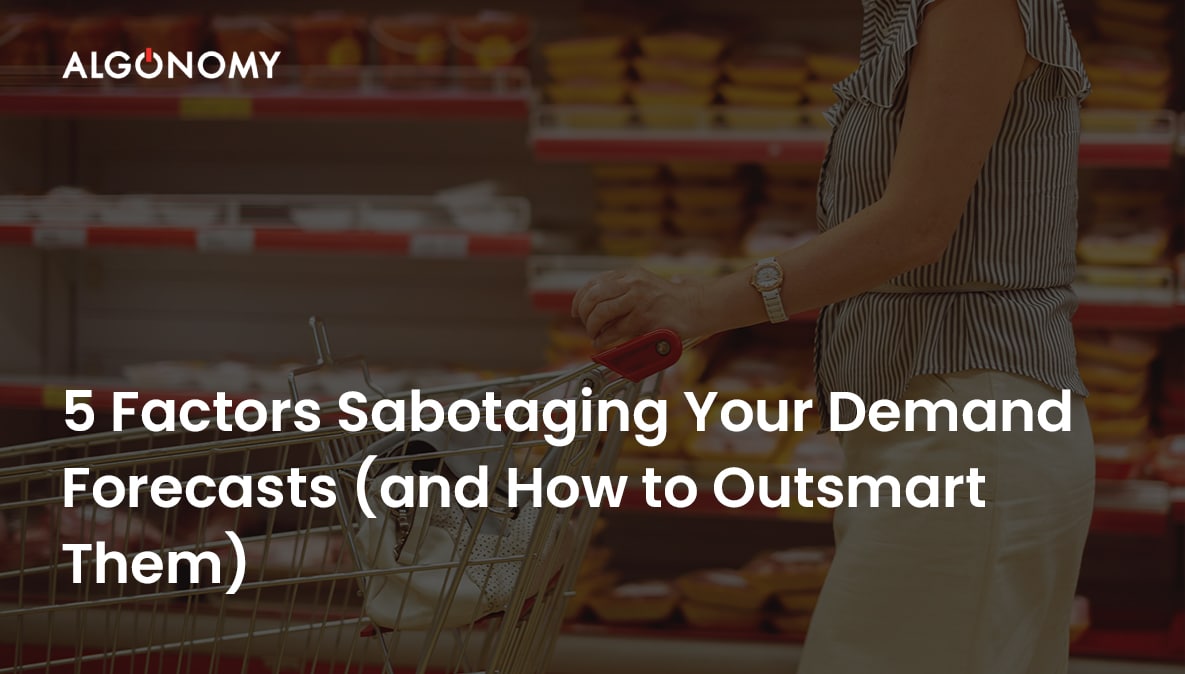In an era where all the customers’ whims and nuances get delivered within minutes to the doorsteps, staying ahead of the customer sentiment while keeping the unit economics intact with optimal inventory in offline retail, is a Herculean task. Recent studies reveal the total cost for inventory distortion to be a staggering $1.77 trillion worldwide, and the lost sales owing to stock issues amounted to a whopping $349 billion for U.S. and Canadian retailers in 2022.
The retail industry is undergoing a huge paradigm shift and having the right inventory at the right place at the right time, data-driven decision-making, and understanding store and supply chain dynamics is vital for profitability. While all of these are crucial pillars, accurate forecasting or demand planning emerges as the most critical factor that is directly linked to profitability, inventory investments, customer satisfaction, wastage, and more. However, factors, such as manual adjustments to seasonal variations and static planning for inventory can affect the overall efficacy of demand forecasting solutions.
Below, we discuss some other factors that sabotage demand forecasting and ways to outsmart them for optimizing replenishment, minimizing inventory distortions, and unlocking greater cost savings without compromising customer satisfaction.
1. Manual Demand Forecasting Processes
Adjusting forecasts manually to crank the inventory up and down for seasonal variations or unexpected events is prone to errors and delays. A standard 5% or 10% increase in inventory might lead to missed demand mapping, overstocks, markdowns, and empty shelves. These errors can ripple through the supply chain, affecting customer satisfaction and operational costs.
On the other hand, AI-powered demand forecasting processes disparate and unstructured data sets such as historical data, market trends, and predictive analytics to automate inventory decision-making. Retailers can automate repetitive tasks like data collection and analysis and choose from a set of highly configurable machine learning algorithms to dynamically refine forecasts based on real-time data inputs, actual store and supply chain level indicators, and disruptions.
2. Static Planning & Outdated Data
Traditional forecasting relies on static tools like sheets and only uses the most recent data, some of which might be in silos, creating huge caveats for accurate demand planning. Ignoring the demand fluctuations, seasonality, and micro-trends, and adjusting inventory to outdated data can skyrocket inventory investments and stock issues.
Automation-powered forecasting solutions can capture real-time changes in demand, and anticipate fluctuations via predictive insights drawn from exhaustive data analytics. Retailers can leverage advanced analytics to identify seasonal patterns, trends, and promotional impacts on demand, which allows for continuous adjustment and optimization. They can dynamically adjust to SKU-store-level demand patterns and supply chain disruptions based on rich, data-driven, and reliable forecast insights, thereby unlocking precision at hyperlocal levels.
Now that you’re up to speed on the latest trends, it’s time to dive into effective strategies. Here are some winning tactics of successful brands to spark your 4th of July marketing efforts. This will help you harness the patriotic fervor to create impactful marketing campaigns that resonate with your customers and boost your sales.
3. Poor Data Quality
Data in retail is fragmented, noisy, and sparse. The inability to integrate data from disparate sources, and refine it for drawing out actionable insights undermines the reliability of demand forecasts, leading to inaccurate inventory management and operational inefficiencies. Intelligent forecasting solutions come with built-in AI and ML capabilities to overcome these data hurdles and can generate highly focused and reliable forecasts within minutes. Empowered with the ability to choose from ensemble retail-tuned algorithms, businesses can revolutionize demand forecasting. They can view single forecasts, compare and revisit them, and aggregate them at the product, and hierarchy level as well. With advanced scenario modeling, they can easily build and pick the best model out of hundreds of choices and unlock greater control and precision over replenishment.
4. Ignoring External and Internal Influences
Retail sales influencers can be external as well as internal and ignoring them during demand forecasting can skew the results. However, manual as well as traditional forecasting methods are not equipped to incorporate external as well as internal influencers, and they cannot identify the right influences for specific products, categories, locations, etc.
On the other hand, AI-powered demand forecasting solutions come with built-in lists of external and internal influences that can be configured to business-unique factors and allow retailers to create forecasts according to the chosen factors. They can adjust the forecasts at the product location level for multiple factors at once and create highly refined and accurate plans for minimizing stock issues while keeping customer satisfaction intact.
5. Product Cannibalization & New Product Introduction
Inter-SKU effects during sales and promotions can lead to double loss for retailers, if not managed well. Likewise, new product introductions can derail inventory planning if not considered during demand forecasting. Apart from leading to stock issues, they can spur secondary challenges like lost sales, and high operational costs, and dent customer loyalty.
AI/ML-powered demand forecasting manages cannibalization by dynamically balancing demand between products, considering promotions and availability. Retailers can launch new products without affecting revenue and sales across all product locations, or inducing inter-SKU effects, thereby unlocking intelligent replenishment, greater revenue, and efficient operations.
Accurate measurement of how much the customers will buy is ‘Step Zero’ for ensuring optimal demand fulfillment. It anticipates demand fluctuations, ensures the right amount of stocks at all times, and enables retailers to efficiently mitigate customer needs without ballooning the costs or inventory, and automation is the key enabler. By integrating disparate data sources, dynamic planning, incorporating all sales influencers in forecasting, and intelligent demand planning, retailers can improve shelf availability by 90%, and reduce OOS by 75%, inventory costs by 10%, and wastage by up to 30%, thereby unlocking greater savings, and unparalleled efficiencies.
To know more, contact us at hello@algonomy.com
Disclaimer: This blog does not indicate an ongoing business partnership with the brands, and all references are solely for illustrative purposes.
Also read: 9 Best Practices in Demand Forecasting for Grocery Retailers
 in Sweden from 7 - 8 October 2025. Pre-book a meeting to connect with our
product experts.
in Sweden from 7 - 8 October 2025. Pre-book a meeting to connect with our
product experts.










